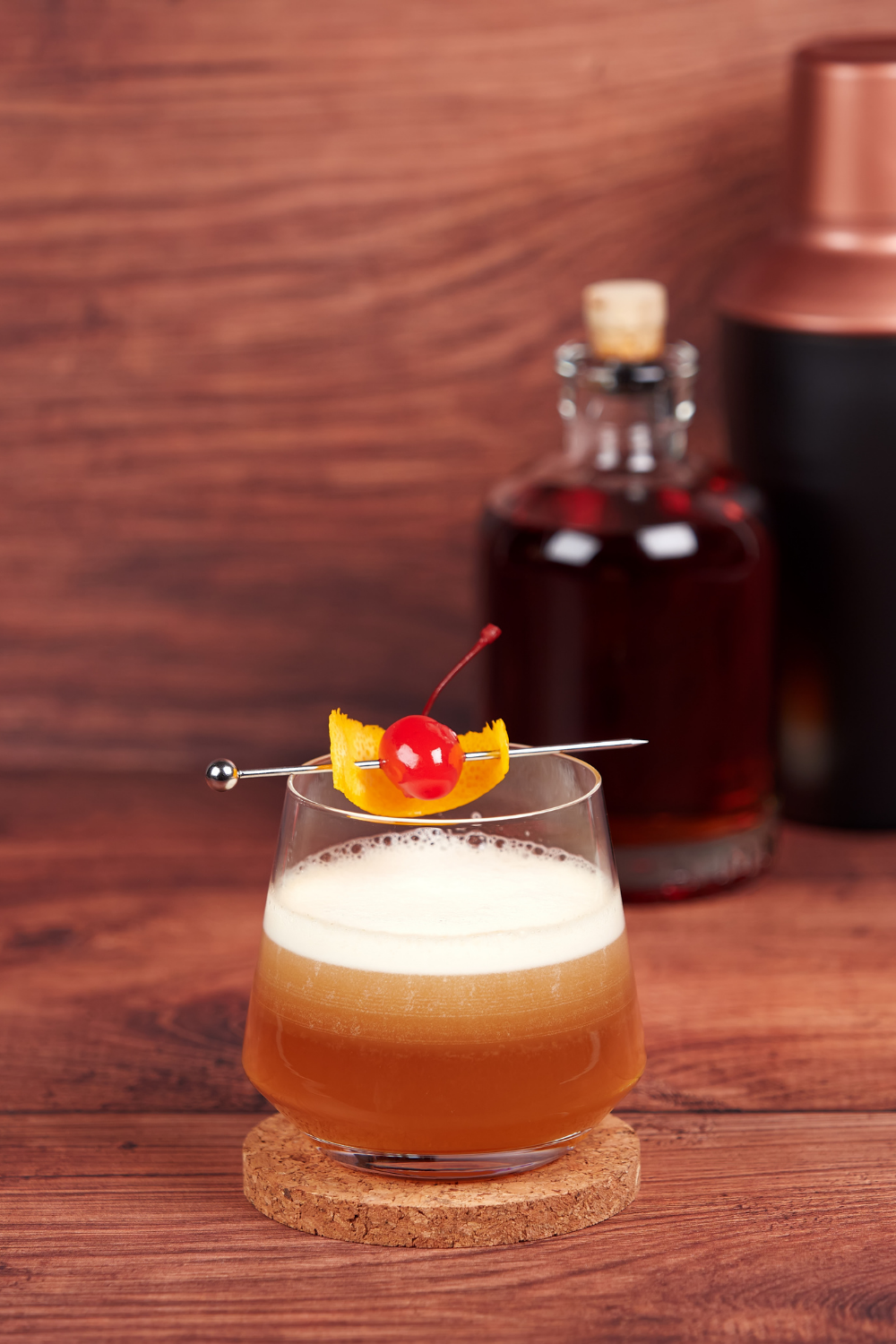As an Amazon Associate I earn from qualifying purchases and sometimes recommend products from other sellers at no extra cost you. For more details see my disclosure policy and privacy policy.
Amaro vs amaretto, amaro or amaretto? These are two different types of liqueurs that are used in many cocktails. One is sweet and the other bitter, but what is the difference between them? This blog post will give you an overview of amaro and amaretto, how they’re both used in drinks, and where they came from.
Contents
What is amaro?
The term amaro, which is Italian for “bitter,” refers to a variety of liqueurs that are savoury and bitter. After dinner as a digestive, it’s customary to drink an amaro, which is also the name for an Italian liqueur with a flavour profile comparable to vermouth.

Traditionalists might be shocked by the way we combine amari (plural) and alcoholic beverages in the aperitivi category—vermouths, for example, and mixed drinks like Campari and Aperol that are intended to be consumed before dinner as spritzes.
We all break the rules to some extent, mixing drinks and spritzes with amari whenever we feel like it. One of the things we appreciate about amari is that they have a lower alcohol content than most spirits, allowing us to enjoy them whether before or after a meal.
It’s important to note that absinthe is significantly stronger than cocktail bitters like Peychaud’s or Fee Brothers, which are used in tiny amounts and only because of their strength.
What is amaro meletti?
Amaro Meletti is a distinctive member of the extensive amaro family. Deriving its unique flavor from a secret blend of herbs and botanicals, this liqueur is a product of Italy’s Marche region. It’s named after Silvio Meletti, who began producing this amaro in 1870. The Meletti family continues to uphold the tradition, carefully following the original recipe.
Amaro Meletti stands out for its special ingredients including saffron, one of the world’s most expensive spices, which contributes a subtle richness to its flavor profile. It strikes a pleasing balance between sweet and bitter, offering hints of anise, clove, and orange peel. Traditionally served neat or on the rocks post-dinner to aid digestion, Amaro Meletti can also be used in a variety of modern cocktail recipes. It’s lower alcohol content, much like other amari, makes it a versatile addition to any home bar.
Amaro history
Amaro began in monasteries during the 15th or 16th centuries, based on herbalism and healing practices, and became a popular bottle business in the 1800s.
It’s a huge, somewhat amorphous category that includes well-known brands and countless obscure ones. They’re all liqueurs created by infusing a spirit or wine base with botanical additives; they range from cardamom, clove, and chamomile to wormwood and kola nut.
The substances are cultivated, gathered, and processed in such a manner that the recipes’ authenticity is preserved. Plants, flowers, spices, roots, and barks’ secret tinctures almost always include 30 components and always have a pungent component to give backbone to the mix.
Then they’re aged in barrels for months, often longer than wine. There are various subcategories and styles, including:
- Rabarbero, a variety of amari made with Asian rhubarb root;
- Braulio, an amaro from the Alps that employs a plethora of high-altitude herbs and has a fresh, piney flavor
- Aperol, Campari, and Fernet Branca are three Italian apertifs that are similarly bracing, with a more prominent eucalyptus or menthol scent.
- The most renowned is Fernet-Branca, which touts itself as a restorative with excellent digestive qualities among connoisseurs.
What is Amaretto?
Amaretto is a sweet nut liqueur that’s characterized by being pumped full of additions to provide it with a pleasant sweetness and taste. The cocktail was first created in Italy, though its backstory varies depending on who you ask. It is a modern classic in the United States, where it did not appear on store shelves until the 1960s, however, it is an old favorite in its native country of Italy, albeit with a few variations.

Amaretto has been made with drupe fruit seeds such as apricots or peaches for centuries. However, almonds are also a popular component. Each of these raw components generates benzaldehyde, a chemical that gives amaretto its unique flavour.
The result of the alchemical process is almond milk, which contains tiny amounts of cyanide that are removed during the infusing process. Amaretto, unlike amaro, is only supposed to be slightly bitter. As a result, it commonly receives additional sweetness from caramel or sweet almonds in order to make it more pleasant to drink.
The process begins with steeping the materials for several months before filtering, hydration to between 20% and 30% ABV, and bottling.
Amaretto History
The legend goes that when Leonardo’s apprentice, Bernardino Luini, was asked to paint frescoes for the Santuario della Beata Vergine dei Miracoli (Sanctuary of the Virgin Mary of Miracles), he added amaretto to his palette.
He got the idea for his Madonna after seeing a local widow innkeeper who acted as a source of inspiration. It’s been said that they soon became lovers, and she couldn’t afford to buy him any apricot kernels straight from the tree, so she gave him some brandy-soaked apricot kernel tea instead.
According to the legend, the DiSaronno amaretto company has claimed that her original recipe was passed down through many generations until it was utilized by the Reina family.
The Lazzaroni family, on the other hand, is usually credited with having invented amaretto. In 1786, the Lazzaroni family presented Saronno’s king with their new apricot kernel amaretto biscuits.
In the mid-nineteenth century, the same family began commercializing a beverage containing caramel colouring that duplicated the taste of the biscuit. It was not until the 1960s that amaretto became available in the United States.
It was moderately famous by the 1980s when it began to rival other best-sellers such as Kahlua.
What does amaretto taste like?
The Italian translation for amaretto, “piccolo amaro,” pretty accurately describes the flavor of the drink. The kind of beverage that Thrillist claims have an ABV ranging from 21 to 28% conceals its alcohol taste with a delicious sweetness, but it’s not all.

The almond flavor of the cordial is complemented by the mild bitterness that its Italian name describes. Almonds are not the source of amaretto; instead, it’s usually apricot pits or a combination of both. Some firms add a blend of herbs and spices to their amaretto, which can also be detected.
However, if you decide to drink it straight, experts warn that it may be exactly too sweet or even have a taste that recalls cough syrup. By combining the liqueur with another substance, such as bourbon, or pouring it over ice, mixologists advise mitigating this.
When it comes to choosing the best amaretto for your home bar, you might prefer to spend a little more and go for a premium version, which is less sugary than the lower-cost alternatives.
Isn’t Amaro the same as amaretto?
Is Amaro the same as amaretto? Amaretto, also known as “small bitter,” is a sweet almond-flavored liqueur cordial. Amari are frequently prepared from diverse spices, herbs, fruits, and alcohol.
What does an amaro taste like? An amaro differs from the more sweet amaretto in that it has a greater bitterness and may contain up to 40% alcohol by volume (via A Bar Above).
Is amaretto a type of amaro? What is the etymology of the word “amaretto”? The name amaretto was derived from the Italian term for “bitter,” which refers to the mandorla amara’s or drupe kernel’s distinctive taste. The name of the liqueur, which means “a little bitter,” may be interpreted in this way.
What is the best substitute for amaro? The following are some of the finest alternatives to amaro: Gammel Dansk, Chartreuse, Bonal, and Cynar 70. If you want a no- or low-alcohol option, consider using Chinotto or Angustoro Bitters instead. Although the flavor of a substitute may differ, it will generally be appropriate in whatever you’re preparing.
Is Campari the same as amaro?
Campari, by any other name: Campari is well-known throughout the United States. Some people, on the other hand, wonder if it belongs in the same category as dessert liqueurs such as Fernet after dinner. “Campari is a classic amaro,” Dave Karraker of Campari says.

Is amaro like Aperol?
Aperol was created in Padua, Italy, in 1919. Aperol is a milder amaro that makes it easier to approach the more sophisticated amari. It has a strong orange flavour and is easy to drink with sparkling wine or soda.
You Might Also Like 14 Herbal Liqueurs to Have on Your Cocktail Shelf by The Cocktail Bird
What works as an amaro meletti substitute?
If you are searching for a substitute for Amaro Meletti, there are several other options available. Averna, a Sicilian amaro, boasts a similar profile to Meletti with its slightly sweet and moderately bitter taste. Ramazzotti amaro, another Italian favorite, bears a rich, complex flavor and can be a viable substitute as well.
Moreover, Montenegro, a well-balanced amaro with a mild bitterness and a hint of eucalyptus, can be a great alternative. You may also consider Cynar, a unique amaro made from artichokes, known for its distinct botanical flavor.
However, it is essential to remember that every amaro has its unique flavor profile, and the choice of substitute will depend on your specific taste preference and the requirements of the recipe.
Amaro vs amaretto
Amaretto and amaro are liqueurs that sound a lot alike but have a lot of differences. The difference between amaretti and amaris is that amaro may be more bitter than amaretto with different alcohol contents (ranging from 21-28% ABV). Amaro also has a broader range of flavors stemming from the type of herbs or spices used as well as its base spirit while amaretto is always based around almonds.
When choosing an amaro to add to your home bar, you might prefer one made with higher quality ingredients such as Fernet Branca since it costs less per ounce than some other brands like Campari.

Vanilla Cheesecake Cocktail
Looking for something sweet and creamy? Why not try this vanilla cheesecake cocktail recipe! It is one of those delicious drinks that is perfect for parties or any other special occasion. It’s easy to make, there’s no cream cheese in sight and it tastes amazing. Let’s get started! Why you’ll love this recipe It’s uniquely scrumptious –…
More From The Cocktail Bird:
How to Find a Favourite Cherry Flavoured Alcohol







